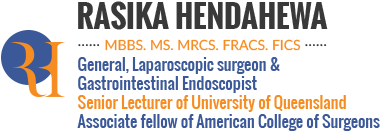Varicose Veins Treatment
Varicose veins are blood vessels that are abnormally dilated which appear swollen, twisted and can be painful. Varicose veins can form anywhere in the body, but they are usually seen in the back of the calf or on the inside of the leg. They occur when the valves in the veins do not function properly and the blood leaks down and collects in the veins. This causes the veins to enlarge. Women are more likely to get varicose veins than men. Puberty, hormonal changes, weight gain, lack of physical activity, pregnancy, birth control pills, sitting or standing for a long time are some of the factors that causes varicose veins. Varicose veins appear as blue, purple, or red veins and look twisted and bulging.
The treatment options include:
Endovenous Thermal Ablation: Endovenous laser method is a minimally invasive method where a laser fibre is guided into the vein till it reaches the site of abnormality. On reaching the site of treatment the fibre is made to emit the laser energy which produces heat near the blood vessel which causes blood to clot in the vessel and thus destroys the blood vessel. The damaged blood vessels will collapse, shrink and finally disappears. This procedure is often performed for larger varicose veins and the procedure can be performed in out-patient setting which may require about 30 minutes.
Ultrasound guided sclerotherapy: Ultrasound guided sclerotherapy technique involves injecting a sclerosing substance, a mild detergent solution, directly into the varicose vein using a very fine needle. The procedure takes about 15 to 30 minutes. An ultrasound is used to track the foam which makes sure that foam enters the varicose veins and not normal veins. The target veins are compressed by bandage and a surgical stocking is placed over this bandage. The sclerosing solution irritates the lining of the blood vessel causing the vein to swell and stick together. Over time, the venous blemishes turn into scar tissue and may disappear. The advantages of using Ultrasound guided sclerotherapy is that it requires no incision, less time for recovery, no scar formation and does not require an overnight stay in the hospital.
Laser vein removal and ablation: Laser therapy is one of the newest ways of treating varicose veins. This treatment can be performed externally or by an endovenous laser ablation method. The endovenous laser method is a minimally invasive procedure which is performed for larger varicose veins. In this procedure a laser fibre is inserted into the vein till it reaches the affected area. The fibre then emits a laser which produces heat and forms blood clots in the vessel. This blood vessel gradually shrinks and disappears. This is an outpatient procedure and takes about 30 minutes.
Radiofrequency Ablation: Endovenous radio-frequency ablation is a minimally invasive procedure performed to seal varicose veins (enlarged leg veins) with heat generated from radiofrequency energy. After the varicose veins are sealed, blood starts flowing immediately to the healthy veins. Veins consist of one-way valves which prevents backflow of blood in the legs. Varicose veins are a result of blood accumulating in the veins of the legs due to leakage in the one-way valves.
Superglue Treatment: VenaSeal is a closure system used for treatment of symptomatic superficial varicose leg veins. It consists of a specially formulated medical adhesive and delivery system which includes a guidewire, catheter, syringes, and a dispenser gun with tips. Your doctor will insert the catheter through your skin into the varicose vein under ultrasound guidance. The diseased vessel is then injected with the VenaSeal adhesive fluid which solidifies after placement inside the vein sealing it off. The procedure is performed on an outpatient basis. You may experience a little pain or burning at the injection site with minimal bruising after the procedure.





